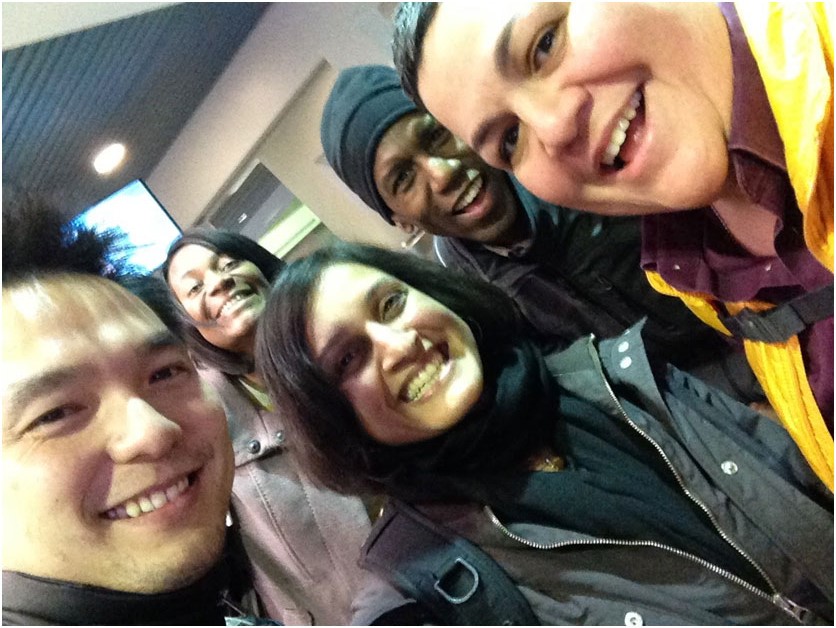Faculty from the Global History Department – Geeta Jain, Yolanda Wilcox Gonzalez, and Rodney Yeoh – led an interactive workshop called The Anatomy of a Wired History Classroom at EduCon 2.7 in Philadelphia, a conference for educators committed to using technology pedagogically in an effort to enhance creativity, research skills, communication, collaboration, and inquiry-driven students.
The goal of the workshop was to dissect the wired history classroom experience and lay on display the “textbook-less” approach to using multiple perspectives, collaborative projects, and assessments. In doing so, the workshop highlighted practical tools that allow teachers and students to become designers, provided tips for classroom teachers wherever they may land on the technological spectrum, and gave concrete examples of how to make technology work for teachers, for students, and for the history classroom.
Workshop attendees were given an opportunity to play with the examples provided by our faculty, brainstorm ideas for how to implement the tools, and share ideas around best practices.


I’m curious about how/when students learn about US Constitution and how US , State, and local governments function. Is this part of a coded learning process? What is the historical content of material dealt with in Brazilian presentation? Thanks. Nancy Moore ’41
This is a great question, and one that we always keep in mind when we use new tech tools or innovate in our classrooms. We always make sure that whatever new tools or initiatives we implement, we do it in a way that enhances learning. U.S. History remains at the core of what we teach, especially civics and government. Students take U.S History in 9th and 10th grades.
There are a variety of tech tools we use in our classrooms such as coding, TED-Ed, blogs, Skype – and other schools are very interested in how we are using these. Which is why we presented in Philadelphia and in Brazil, and continue to be invited to present at conferences throughout the year.
These tools allow students to look at and present the content using different formats; however, the content itself is still there. Students still learn about the Constitution but now they can discuss and debate the idea of democracy or how their government functions with students in Egypt using Skype. Students research about the Revolutionary War and they use TED-Ed to write and present Loyalists’ and Revolutionaries’ ideas. Students enhance their learning of the Westward Expansion or the Civil War by writing code that visually represents their research, and then explain it to the class.
Students continue to debate and write papers, those skills always remain important, and all of these tools have given them new opportunities to collaborate and demonstrate their knowledge and understanding.
Thank you for your question!
Kader Adjout, History Department Head